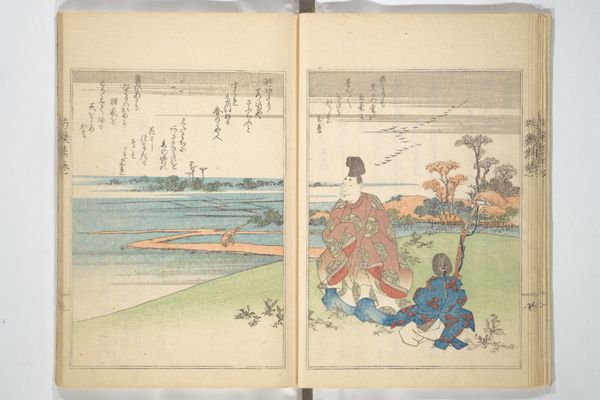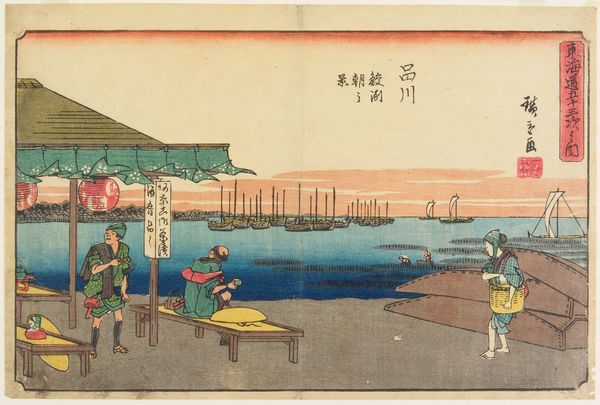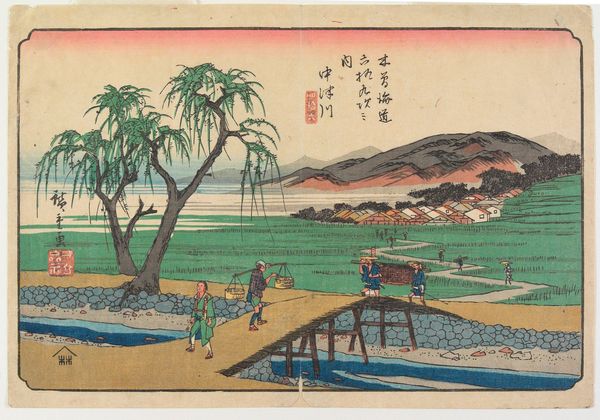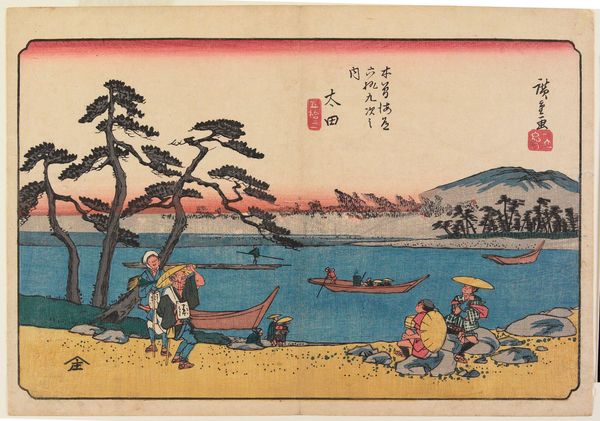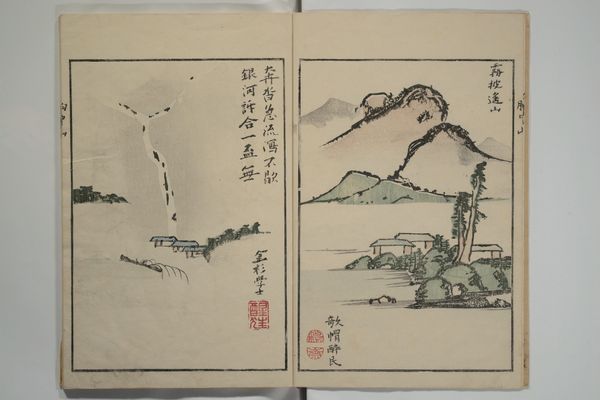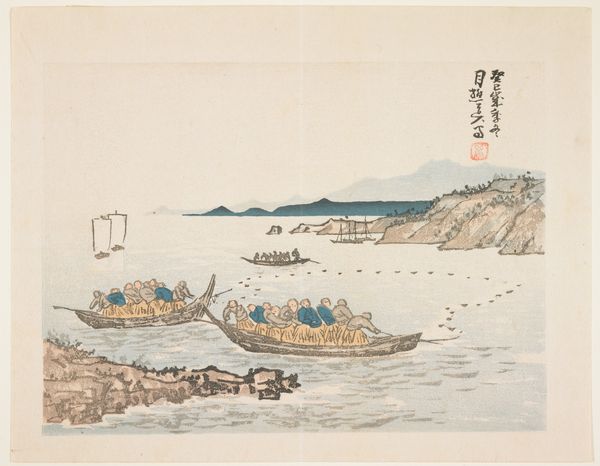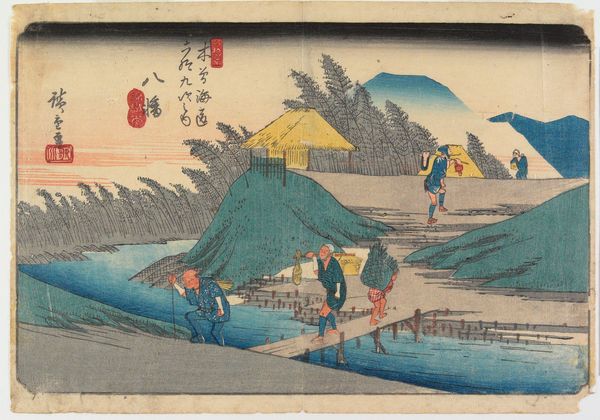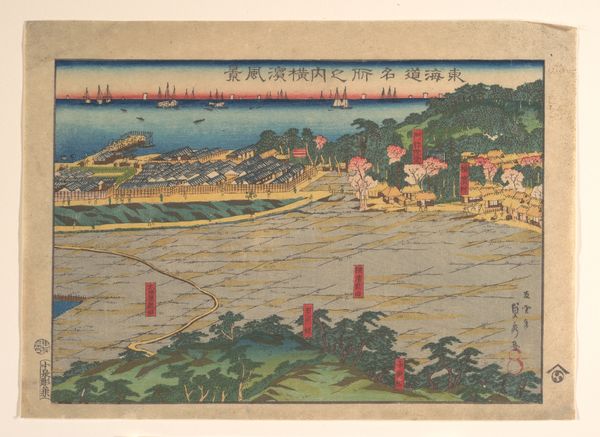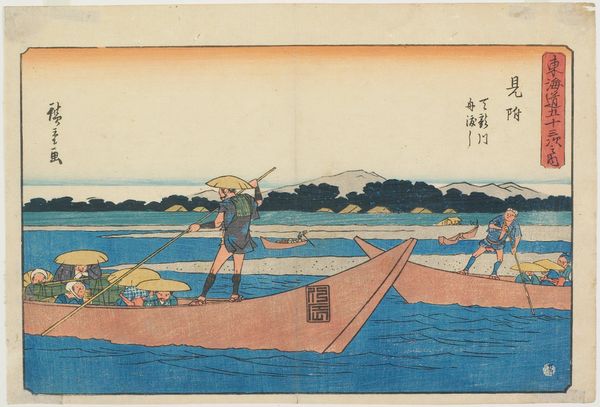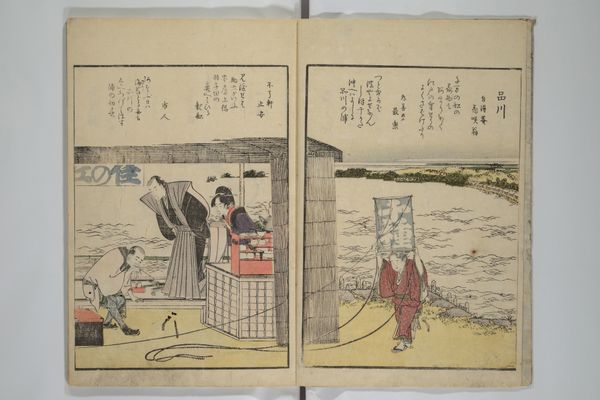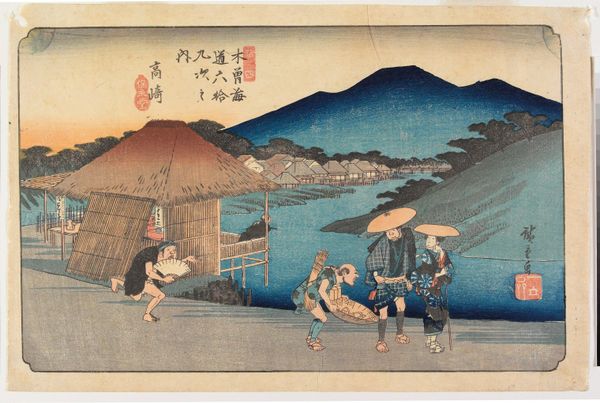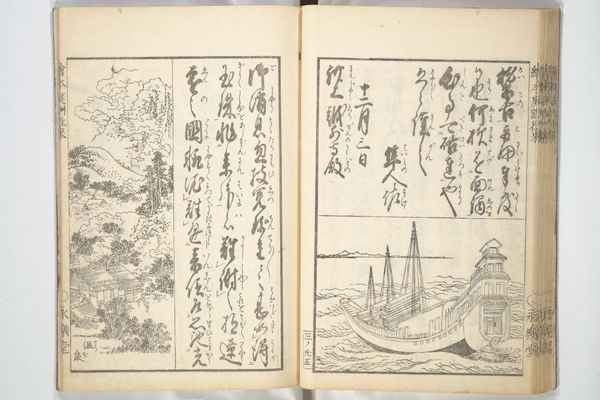![Panoramic Views of Both Banks of the Sumida River at a Glance (Ehon Sumidagawa ryōgan ichiran): [volume 3] 繪本隅田川兩岸一覧 by Katsushika Hokusai](/_next/image?url=https%3A%2F%2Fd2w8kbdekdi1gv.cloudfront.net%2FeyJidWNrZXQiOiAiYXJ0ZXJhLWltYWdlcy1idWNrZXQiLCAia2V5IjogImFydHdvcmtzL2E5YTc0MTg5LTE1M2EtNDhlYS1iMTUxLTBkNWE0ZTFjNjA0Ny9hOWE3NDE4OS0xNTNhLTQ4ZWEtYjE1MS0wZDVhNGUxYzYwNDdfZnVsbC5qcGciLCAiZWRpdHMiOiB7InJlc2l6ZSI6IHsid2lkdGgiOiAxOTIwLCAiaGVpZ2h0IjogMTkyMCwgImZpdCI6ICJpbnNpZGUifX19&w=3840&q=75)
Panoramic Views of Both Banks of the Sumida River at a Glance (Ehon Sumidagawa ryōgan ichiran): [volume 3] 繪本隅田川兩岸一覧 1801 - 1811
0:00
0:00
print, woodblock-print
# print
#
book
#
asian-art
#
landscape
#
river
#
ukiyo-e
#
figuration
#
coloured pencil
#
woodblock-print
Dimensions: each: 9 1/4 × 6 5/8 in. (23.5 × 16.9 cm)
Copyright: Public Domain
Curator: This book of woodblock prints, "Panoramic Views of Both Banks of the Sumida River at a Glance," by Katsushika Hokusai, painted sometime between 1801 and 1811, pulls us into a tranquil yet bustling scene along the river. It’s currently held in the collection of the Metropolitan Museum of Art. Editor: My first impression? Pure, serene flow, even with the people there. It feels like a breezy afternoon by the water—the colors are muted, yet vibrant. A real sense of place. Curator: Absolutely. Hokusai captures the lifeblood of Edo, now Tokyo, the Sumida River itself. But look closer: consider how the lines create that flow you sensed—leading the eye across the water, punctuated by human activity, almost like musical notes on a staff. Editor: Exactly, and the figures on the bridge, especially that individual hauling what looks like finished goods, strike me as central. You have to think about who these woodblocks were made for, the people who’d handle and disseminate the image… was Hokusai responding to merchant patronage or reflecting a changing sense of the river’s role? Curator: Perhaps both? Ukiyo-e prints were consumer objects, of course. I always found the juxtaposition so beautiful and odd; we’ve got nature and labor harmonizing within this constructed vista—the river as both a conduit of trade and a space for leisure. I can almost feel the rhythm of everyday life from centuries past, carried on that breeze. Editor: Right, this wasn't about the sublime terror of nature. Instead, it shows nature being actively navigated, lived within. Plus, think about the skill that went into carving these blocks and layering the colors. How much craft did this require? The production speaks to a broader community involved in not only imaging the city, but in producing a particular lifestyle too. Curator: So true. I now notice the tiny, almost ephemeral figures of those flying the kites against the distant backdrop. In that detail, I realize that each of us likely engages with a small part of the picture as the other finds a totally separate area to consider. It is all encompassing! Editor: The image opens questions of access, labor, materiality... ultimately, what are the relationships Hokusai created through this book? These scenes may look calm, but they churn beneath the surface with the energy of the city.
Comments
No comments
Be the first to comment and join the conversation on the ultimate creative platform.
